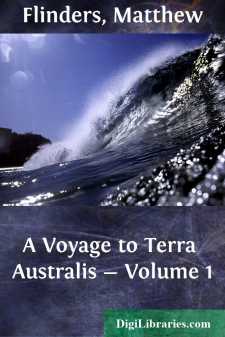Categories
- Antiques & Collectibles 13
- Architecture 36
- Art 48
- Bibles 22
- Biography & Autobiography 813
- Body, Mind & Spirit 141
- Business & Economics 28
- Children's Books 12
- Children's Fiction 9
- Computers 4
- Cooking 94
- Crafts & Hobbies 4
- Drama 346
- Education 46
- Family & Relationships 57
- Fiction 11826
- Games 19
- Gardening 17
- Health & Fitness 34
- History 1377
- House & Home 1
- Humor 147
- Juvenile Fiction 1873
- Juvenile Nonfiction 202
- Language Arts & Disciplines 88
- Law 16
- Literary Collections 686
- Literary Criticism 179
- Mathematics 13
- Medical 41
- Music 40
- Nature 179
- Non-Classifiable 1768
- Performing Arts 7
- Periodicals 1453
- Philosophy 64
- Photography 2
- Poetry 896
- Political Science 203
- Psychology 42
- Reference 154
- Religion 513
- Science 126
- Self-Help 83
- Social Science 81
- Sports & Recreation 34
- Study Aids 3
- Technology & Engineering 59
- Transportation 23
- Travel 463
- True Crime 29
A Voyage to Terra Australis - Volume 2
by: Matthew Flinders
Categories:
Description:
Excerpt
CHAPTER I.
Departure from Port Jackson, with the Lady Nelson.
Examination of various parts of the East Coast, from thence to Sandy Cape.
Break-sea Spit.
Anchorage in Hervey's Bay, where the Lady Nelson joins after a separation.
Some account of the inhabitants.
Variations of the compass.
Run to Bustard Bay.
Port Curtis discovered, and examined.
Some account of the surrounding country.
Arrival in Keppel Bay, and examination of its branches,
one of which leads into Port Curtis.
Some account of the natives, and of the country round Keppel Bay.
Astronomical and nautical observations.
[EAST COAST. TOWARDS HERVEY'S BAY.]
THURSDAY 22 JULY 1802
Lieutenant John Murray, commander of the brig Lady Nelson, having received orders to put himself under my command, I gave him a small code of signals, and directed him, in case of separation, to repair to Hervey's Bay; which he was to enter by a passage said to have been found by the south-sea whalers, between Sandy Cape and Break-sea Spit. In the morning of July 22, we sailed out of Port Jackson together; and the breeze being fair and fresh, ran rapidly to the northward, keeping at a little distance from the coast. (Atlas, Plate VIII.)
At eleven o'clock, the south head of Broken Bay bore W. by N. three leagues; and Mr. Westall then made a sketch of the entrance, with that of the Hawkesbury River, which falls into it (Atlas, Plate XVIII, View 2). The colonists have called this place Broken Bay, but it is not what was so named by captain Cook; for he says it lies in latitude 33° 42' (Hawkesworth III. 103), whereas the southernmost point of entrance is not further than 33° 34' south. There is, in captain Cook's latitude, a very small opening, and the hills behind it answer to his description of "some broken land that seemed to form a bay," when seen at four leagues, the distance he was off; but in reality, there is nothing more than a shallow lagoon in that place. In consequence of this difference in position, Cape Three-points has been sought three or four leagues to the north of Broken Bay; whereas it is the north head of the entrance into the bay itself which was so named, and it corresponds both in situation and appearance.
At noon, the south-eastern bluff of Cape Three-points bore S. 64° W., seven or eight miles, and was found to lie in 33° 32½' south and 151° 23½' east. In steering northward along the coast, at from six to two miles distance, we passed two rocky islets lying under the high shore; and at sunset, Coal Island, in the entrance of Port Hunter, bore N. 9° W., five or six miles. This port was discovered in 1797 by the late captain John Shortland, and lies in 32° 56' south, longitude 151° 43' east.
We passed Port Stephens a little before midnight; and the breeze being fresh at W. by S., the Lady Nelson was left astern, and we lay to for an hour next morning [FRIDAY 23 JULY 1802], to wait her coming up. The land was then scarcely visible, but a north course brought us in with the Three Brothers (Atlas Plate IX.); and at four in the afternoon, they bore from S....



